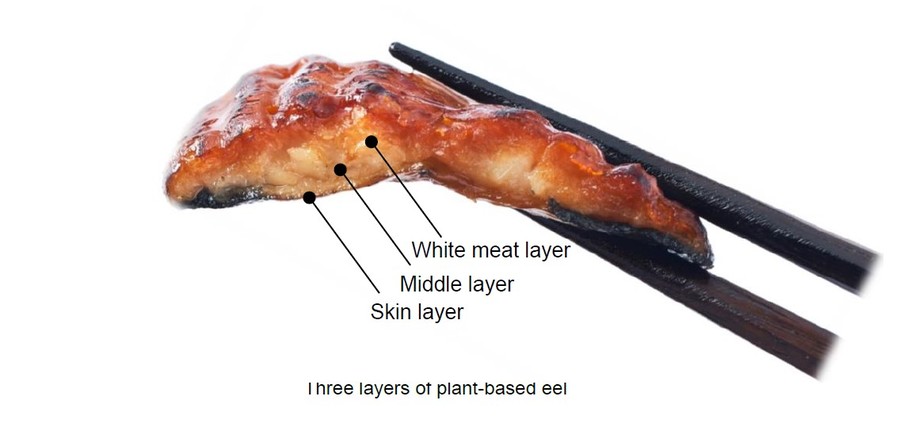Recreating Kabayaki with NISSIN FOODS' Latest Food Technology! Successful Development of Plant-Based Eel to Preserve Japan's Rich Food Culture
NISSIN FOODS HOLDINGS CO., LTD. (President and Representative Director, CEO: Koki Ando, hereinafter "the Company") has succeeded in developing a plant-based eel that recreates the texture, appearance, and flavor of the eel dish kabayaki without using any animal-derived ingredients.

Background and Purpose of the Research
Meanwhile, eel aquaculture relies on natural resources (glass eel, a juvenile eel). Due to the declining volume of glass eels caught in recent years*2 and the soaring price of glass eels, the retail price of eel has also been rising. Furthermore, the complete aquaculture of eels from eggs has not yet been commercially viable as the cost issue remains unresolved, even though the technology has already been established. As a result, if this situation continues, the Japanese food culture of consuming eels may disappear.
Furthermore, for the Tokyo Nutrition Summit 2021, the Company has established a commitment to "improved nutrition" and "sustainable food systems." By advancing the development and commercialization of plant-based eel with the aim of preserving Japan's rich food culture, the Company will strive to create sustainable food systems.
Research Results
In order to achieve a texture similar to real kabayaki, the batter is divided into three layers: the white meat layer, the middle layer, and the skin layer. The white meat layer is made mainly from soy protein granules to create a fluffy, yet fibrous texture. The middle layer is made with vegetable oils and other ingredients to capture the thick texture of the fat between the eel meat and skin*3, and the skin layer is made with bamboo charcoal powder to recreate the unique dark color.
The kabayaki's unique appearance is achieved by stuffing the three layers of batter into a special mold, steaming it, coating it with sauce, and then searing it to achieve a grilled look.

*2 It has been pointed out by the Fisheries Agency that although no direct factors have been identified for the decline, changes in the marine environment and deterioration of the habitat are among the main causes.
*3 A patent has been registered as an eel substitute without using animal-derived ingredients and its production method.